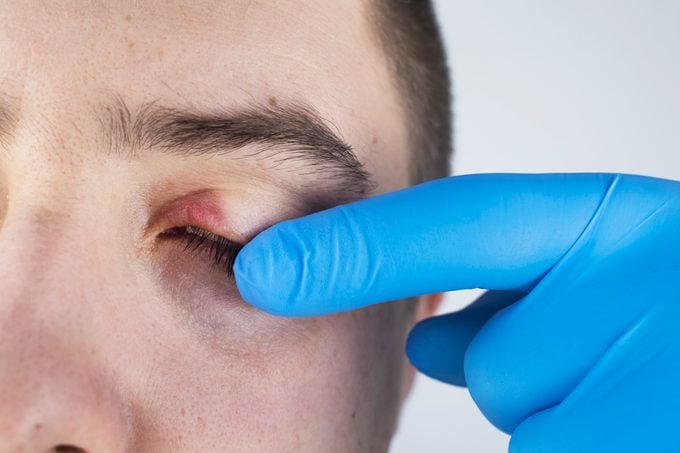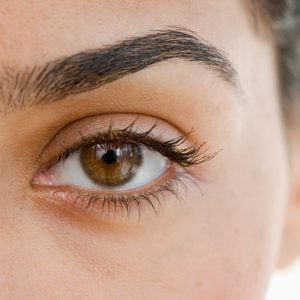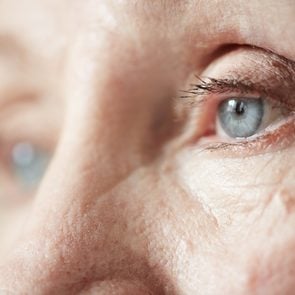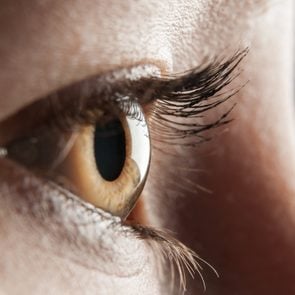What Is Blepharitis? 8 Things Eye Doctors Need You to Know
Updated: Jun. 28, 2021
Symptoms of blepharitis—inflammation of the eyelid—range from mild to severe and can have many possible causes. Check out how to treat and prevent the condition.
Our editors and experts handpick every product we feature. We may earn a commission from your purchases.
A chronic eye problem
It doesn’t endanger your vision, but the eyelid condition called blepharitis can be an almost constant, lifelong annoyance.
“The good news is that it’s not serious,” says Thomas Steinemann, MD, a clinical spokesperson for the American Academy of Ophthalmology. “The bad news is that it’s a chronic problem. I can help you live with it, but I cannot cure it.”
So what is blepharitis? Here’s what you need to know about the causes, symptoms, and treatment of this eye condition.
Blepharitis means “inflamed eyelid”
“Blepharitis” literally means “inflammation of the eyelids.” This causes chronic irritation to your eyes.
“It’s an inflammation of the eyelids and eyelashes and, more specifically, the eyelid margins,” says Matthew Gorski, MD, an ophthalmologist at Northwell Health in Great Neck, New York. The margins refer to the flat rims at the edges of the eyelid that come into contact with the eyeball.
Experts sometimes categorize blepharitis by its location. Anterior blepharitis occurs on the outside front of the eyelid, where the eyelashes attach. Posterior blepharitis affects the inner edge of your eyelid, where it meets your eye.
In reality, the two types often overlap, says Rahul T. Pandit, MD, associate professor of clinical ophthalmology with the Blanton Eye Institute at Houston Methodist Hospital. And you don’t usually need to know what type it is to treat it.
(Here’s what you need to know about eyelid dermatitis.)

Blepharitis is common
“I think most people have it to some degree,” says Janna Lambson, DO, assistant professor of ophthalmology at the University of North Carolina School of Medicine in Chapel Hill. “In a lot of people, it’s subclinical.”
That means that for some people, there may not be any symptoms or hardly any symptoms. For others, there are telltale signs.
The condition is marked by small flakes, or debris, caught in the eyelashes. “It’s pretty rare to have totally clean eyelashes,” adds Dr. Lambson. “Usually you can spot a flake or two.”
The condition most often starts in middle age or later, says Dr. Steinemann, who is also a professor of ophthalmology at MetroHealth Medical Center in Cleveland.
“It’s also something that goes hand in hand with dry eye,” he says. That makes sense, considering dry eye becomes more common as you age as well.
People with the skin condition rosacea are more likely to have blepharitis. But, says Dr. Steinmann, the eyelid disorder doesn’t seem to discriminate based on gender or racial or ethnic group.
Blepharitis causes
These causes of this eyelid condition can range from infection to problems with glands.
“We all have staph bacteria on our eyelids just like we have on our skin,” says Dr. Pandit. But some people have more, which can lead to a chronic, low-grade infection that causes debris to build up.
Tiny parasites, or mites, called Demodex can also play a role. Don’t freak out. These microscopic critters don’t cause major harm.
In addition to rosacea, oily skin, dandruff, and allergies can result in blepharitis. Certain drugs (like the acne medication Accutane) can up the risk as well.
And some people just have a genetic predisposition, says Dr. Gorski.
No matter what the cause, people with blepharitis usually have clogged meibomian glands, Dr. Gorski says. These are glands at the edges of the eyelids that produce oil to protect and lubricate your eyes.
Most of the time, though, doctors aren’t trying to figure out why a person has blepharitis unless they have rosacea, notes Dr. Lambson.
(These are the eye infection signs you should know.)
Blepharitis symptoms
Everyone’s blepharitis symptoms are a little bit different, and while they may wax and wane, they never truly go away without some kind of treatment, says Dr. Steinemann.
The main blepharitis symptoms include:
- Red eyes that burn, itch, or sting
- Tearing
- Feeling like there’s something in your eye (called foreign body sensation)
- Swollen eyes or eyelids
- Dry eyelids
- Flakes or debris at the bottom of the eyelashes
- A feeling of your eyes being “glued together” in the morning
- Crusty eyelids or eyelashes upon waking up and sometimes during the day
Blepharitis symptoms usually affect both eyes. The condition can also be associated with styes, conjunctivitis, blurry vision, and even damage to the cornea (the outer layer of your eye).
If the cornea is affected, your vision could be in danger.
Diagnosing blepharitis
To diagnose blepharitis, an ophthalmologist will typically ask you questions about your personal medical history (including whether you have other health conditions, like rosacea) and your symptoms.
Then he or she will conduct an eye exam, looking specifically for signs of inflammation, like thickened eyelid margins, redness, and eyelash matter.
Taking pictures of the meibomian gland and manually pushing on the gland to see if any oil comes out can help confirm a diagnosis.
If your doctor suspects an infection, or if treatment is not helping, he or she may obtain a sample by swabbing the edge of the eyelid. A lab can then determine if there are any bacteria. If there you have an infection, you’ll need to treat it.
In rare cases, a person may need a biopsy to rule out certain types of cancer.
Blepharitis treatment
If symptoms are interfering with your quality of life, the best treatment is routinely cleansing your eyes and eyelids.
You’ll want to wash them every day and usually more than once. “It’s just like brushing your teeth every day,” explains Dr. Steinemann.
There are two main steps.
Start by applying a warm compress to your eyes. It’ll help unstick any debris around your eyelashes and unclog the Meibomian glands.
You could use a warm washcloth, but that tends to lose its heat quickly. Even better is a potato heated in the microwave and wrapped in a wet cloth, or a hand warmer, says Dr. Steinemann. You can also try a warm eye compress mask, like the Bruder Moist Heat Eye Compress.
“Ideally, you would apply some kind of heat for five to 10 minutes at a stretch,” Dr. Steinemann says.
Then you can use diluted no-tears baby shampoo on a clean washcloth or Q-tip to wipe crusting from your lashes and lids (it’s not as bad as it sounds). You can also buy medicated cleaning pads at the drugstore, says Dr. Lambson.
Some ophthalmologists will use heat and massage in their offices to open up the glands.
Washing your hair and face every day will also help keep blepharitis at bay.
(Read about 10 body parts you’re not washing enough.)
Medications can sometimes help
For more severe cases of blepharitis, doctors may prescribe an antibiotic ointment, which you can apply to the base of your eyelashes with a Q-tip. Steroid drops to reduce inflammation are used but only rarely.
“Occasionally you’ll need systemic antibiotics [pills] or anti-inflammatory agents,” says Dr. Gorski. “If there’s an underlying cause, like a medication or a condition, it’s important to identify that.”
Dr. Pantin also recommends omega-3 fatty acid (fish oil) supplements to his patients.
(Learn about antibiotic-resistant superbugs.)
How do I prevent blepharitis?
“The only way to really beat it is daily, persistent, eternal vigilance,” says Dr. Steinemann.
The same measures you’d take to treat blepharitis can also prevent it from occurring and stop it from getting worse.
“Most of it is good hygiene,” says Dr. Lambson. “Usually cleaning off the lashes is a preventive measure.”
Beware of these red flags
Although blepharitis usually isn’t serious, there are some red flags that may indicate a more severe illness.
Be concerned if treatment isn’t working, symptoms are happening in just one eye, or if there are changes in the shape of the lid or lid margin.
Also, “it’s important to visit an eye doctor if you have changes in vision, eye pain, light sensitivity, or visual disturbances,” says Dr. Gorski.
Personal stories
- One Woman’s Battle With Dry Eyes—and How She Found Relief
- I Wore Blue Light Glasses for a Week—Here’s What Happened



